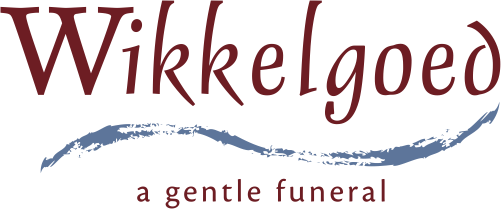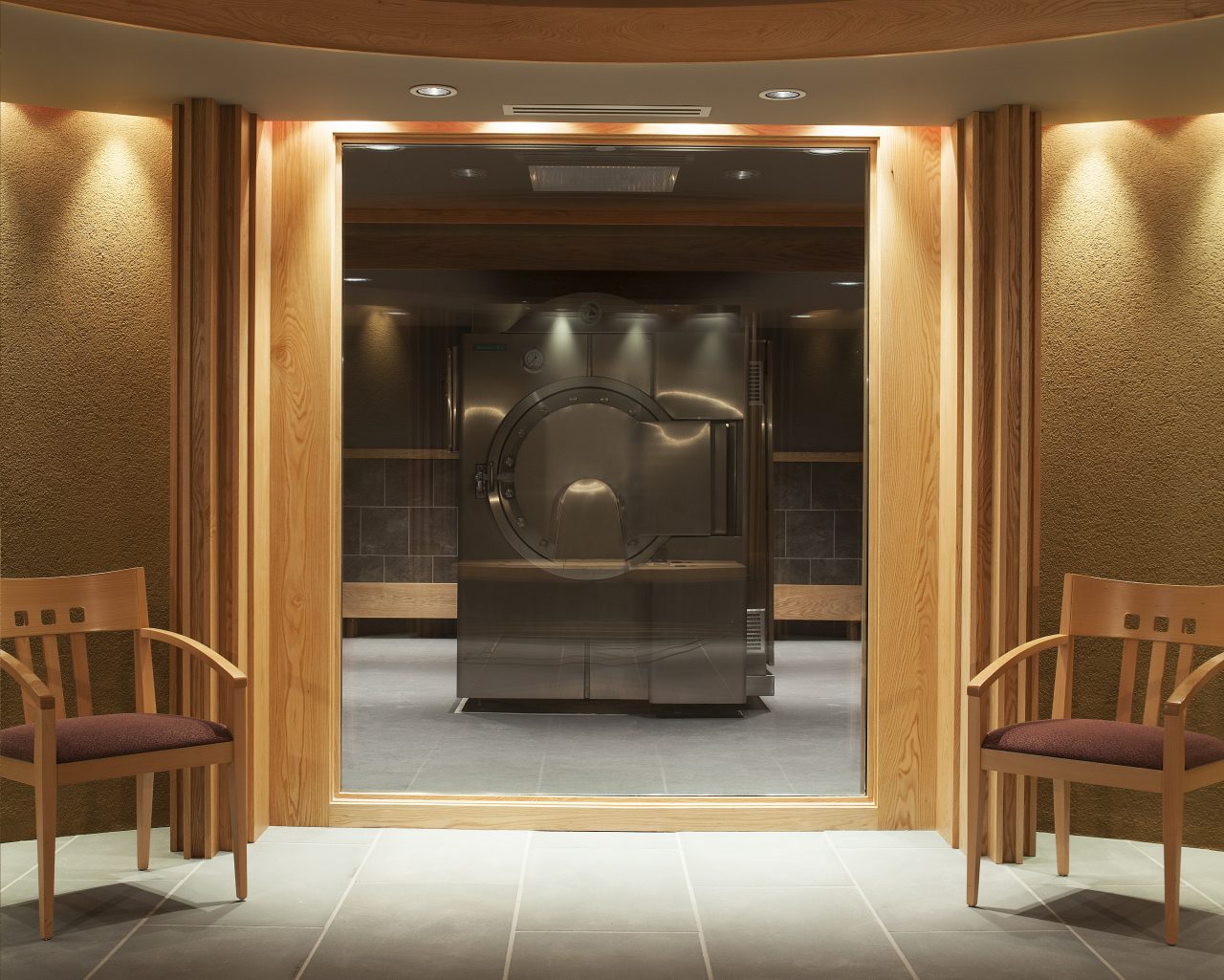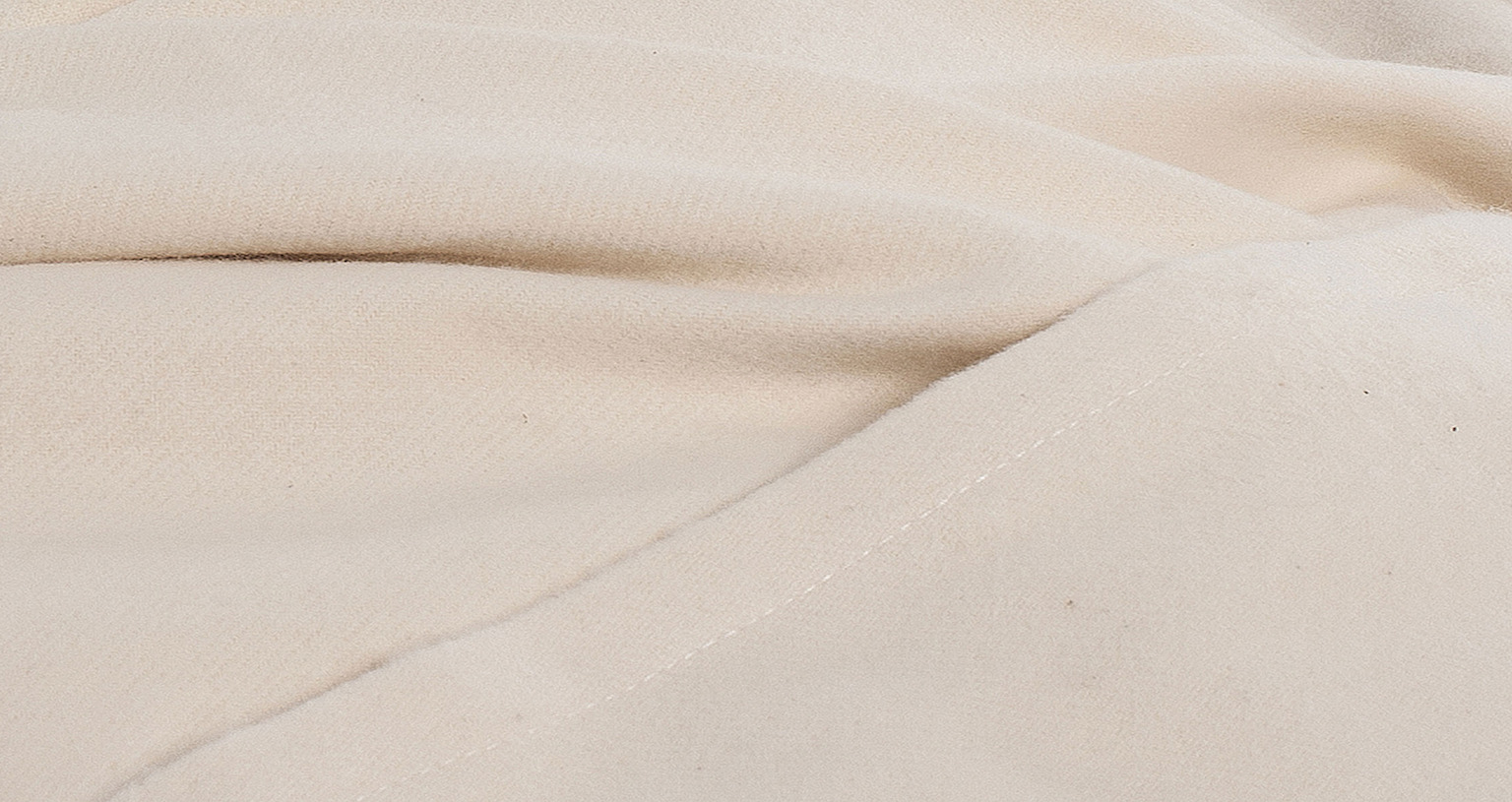No products in the cart.
News: This month, the very first Funeral Center for Resomation in the Netherlands has opened. Read all about 't Vijfde Seizoen under the section 'Resomation in the Netherlands.'

Not too long ago we wrote about resomation as an alternative to burial and cremation, but at the time this possibility seemed something of the far future. It turned out nothing was less true, because at this very moment the first resomators in Holland are already being built.
What is resomation?
Resomation is a form of cremation that uses water. The process was named after the Greek word 'Resoma', which means rebirth. Resomation is a brand name of the first company that started developing machines to use the process of alkaline hydrolisis for the human body. This process is also known as water cremation or aquamation, the latter being the brand name of an other company.
Resomation uses a special machine to speed up the natural process the body goes through when it is buried. Usually this process can take up decennia, but with alkaline hydrolysis this time is reduced to only 3 hours. After the process, the bones are grinded to powder similar to cremation ashes.
The History of Resomation
Alkaline hydrolysis has been used for processing bodies for decades, but primarily in animals. Currently, pets are being resomated, including in the Netherlands, and the technique has been used to process excess livestock in America. Twenty-five years ago, a biochemist named Mr. Sandy Sullivan decided to develop a machine that could be used for this process in humans. He became the founder and namesake of the company Resomation, the first producer of human-sized resomation machines. Since then, he and engineers Tony and Nathan have been advancing this idea worldwide, a process that has had its ups and downs. As early as 2010, they won the Observer Ethics Awards for developing a process that would drastically reduce the CO2 emissions of the funeral industry. However, they realized that changing the world is a process that takes many years.
The first Resomation machines were installed about 20 years ago. They were used to process bodies in the anatomical department of the Mayo Clinic (and later UCLA). Dr. Dean Fisher, the head of the body donation program, was looking for a more environmentally friendly way to do this within the hospital walls. He has since purchased two Resomators for private funerals and is actively promoting the vision of Resomation.
The development of the Resomator™ itself has continued over time. Resomation Ltd has been working on optimizing the process for 16 years. They have conducted extensive research on the proper proportions of potassium hydroxide and heat to make each process as sustainable as possible. Generating excessively high temperatures requires much more energy. They have also designed a closed system that eliminates the need for the operator to come into contact with fluids. Currently, they are working on optimizing heat usage, all with the goal of making resomation as environmentally friendly as possible.
How does resomation work?
Alkaline hydrolysis works in the following way:
Step 1: The body is covered in a special shroud or funeral robe. The reason for this is that not all fibers decompose during alkaline hydrolysis.
Step 2: The body is weighed by the machine, which automatically calculates the right composition of the fluids that are needed to process the body.
Step 3: A mixture of 95% water and 5% potassium hydroxide is added, after which the machine heats it up to 180ºC. Due to the high pressure on the cabin, the water does not evaporate.
Step 4: Next, the machine cools the fluid, after which it is drained.
Step 5: The remaining bones are washed clean at 120ºC and the process is finished.
The remains
What remains of the process is the bones and residual liquid. The pH value of this residue is measured and compensated, so that it has the right value to be discharged into the sewer. This way, the residue ends up in water treatment plants, and eventually becomes surface water. Interestingly, there are more options when it comes to the use of this residue. Part of it can be given to the family, but the liquid could be used in the production of biogas or to fertilize soil. Regarding the bones, these have become so brittel that they are easily grinded to powder. They can be dried and then pulverised in a cremulator, the same machine as is used after cremation.
Resomation in Practice
In alkaline hydrolysis, only animal material is processed, which means that plant material cannot be included in the resomator™. This includes a wooden casket and clothing made of materials such as cotton and linen. We would like to explain the impact, if any, this has on the funeral surrounding resomation.
No Casket
Since a casket cannot be placed in the machine, a woolen shroud or a special body bag is used as a covering. Wool is an animal product that completely dissolves in the resomator™, and the special body bags are made of a hot water soluble bioplastic. It is important that these materials have been tested in collaboration with Resomation Ltd to ensure that no unexpected changes occur in the process.
Regarding transportation, there are several options. The body can be placed on a display board and then carefully moved to the Resomator™ input tray. Alternatively, a reusable casket can be used for this purpose. New products are being developed to make the movement of the body as simple and respectful as possible.
No Personal Clothing
Since personal clothing cannot be included in the resomator™, we are often asked if it is not possible to be laid to rest in one's own clothing. Fortunately, this is not the case as long as there is good communication with the family. If you, as a funeral director or caregiver, would like to know more about this, please feel free to contact info@wikkelgoed.nl. As an alternative to personal clothing, Wikkelgoed has developed a resomable woolen shirt.
Care
Some care products used around the funeral cannot be resomated. Therefore, special resomable products are being developed. If you, as a funeral director or caregiver, would like to know more about this, please feel free to contact info@wikkelgoed.nl.
Alternatives
Resomation is not the only emerging form of alternative body disposal. There is a method called Cryomation, which involves freeze-drying the remains. The body can also be transformed into fertile soil through a process called Humusation. Both of these methods are not yet allowed, but this may change. Minister Ollongren wants to establish a procedure for reviewing new methods of body disposal. This will make it easier in the future to assess which new alternatives have a chance of being approved. Currently, there is insufficient information about human composting to include it in the law. However, once the new admission requirements are clear, relevant data can be gathered accordingly.
A funeral alternative that is already permitted is natural burial, where the body is buried in a designated natural area. This way, these natural areas are protected by law, and funds are allocated for the maintenance and development of these areas.
Terminology: Resomation, Aquamation, or Water Cremation?
Resomation goes by many names: water cremation, green cremation, aquamation, resomation, and alkaline hydrolysis. Below, we will guide you through the precise meanings and origins of these different terms.
Alkaline Hydrolysis
Let's start with the term for the underlying process: Alkaline Hydrolysis. Hydrolysis is the process that typically occurs during burial with the help of soil bacteria. These bacteria, with the aid of water, break the bonds between various molecules. Essentially, the body is broken down into reusable individual molecules. In resomation, the same process occurs but is accelerated using temperature and potassium hydroxide. Potassium hydroxide is an alkaline (basic) material, which is the opposite of acid. Alkaline simply means basic. Alkaline Hydrolysis, therefore, refers to the breakdown of molecular bonds using water and an alkaline substance.
Resomation
The verb "resomation" is derived from the first developer of machines used to apply Alkaline Hydrolysis to humans: Resomation Ltd. This is also where the machine name Resomator™ comes from. The company name originated from the English verb "to resolve," which means to dissolve or break down. A coincidental side note is that "Resoma" is also the Greek word for rebirth.
Aquamation
The term "aquamation" is derived from the company name Aquamation, a subsidiary of Bio-Response Solutions that later became a competitor of Resomation Ltd. Technically, aquamation does not perform resomations since it is a different company name. However, in colloquial usage, the terms are often used interchangeably. Technically, aquamation follows a similar process to resomation: both utilize alkaline hydrolysis.
Green Cremation
The use of the term "green cremation" stems from the primary advantage of resomation: it is a more environmentally friendly alternative to traditional cremation. However, the term can be misleading as it does not specify that it involves a completely different process that uses water.
Water Cremation
"Water cremation" presents itself as a logical and 'neutral' term. However, the term still refers to cremation, whereas alkaline hydrolysis is a fundamentally different process that uses water.
It appears that the verb to be included in Dutch legislation will be "resomeren." That is why we use "resomeren" as the general term on this page.
Why choose resomation?
Around the globe, 150.000 people die every day. This number rises even further as the population increases. At this moment there are countries, such as England, where the day that all burial sites are full is coming frighteningly close. This use of soil for burial has a large impact on our environment. It would be a logical step to switch to cremation, but this process of burning is hardly better for the environment. The estimated impact of an average cremation amounts to around 320 kilos CO2. A study lead by TNO showed that Resomation emits seven times less CO2 (Keijzer, 2014). This makes resomation a far more attractive alternative.
As a comparison, take a look at the table below that shows the environmental effects per funeral technique, as reported by TNO:
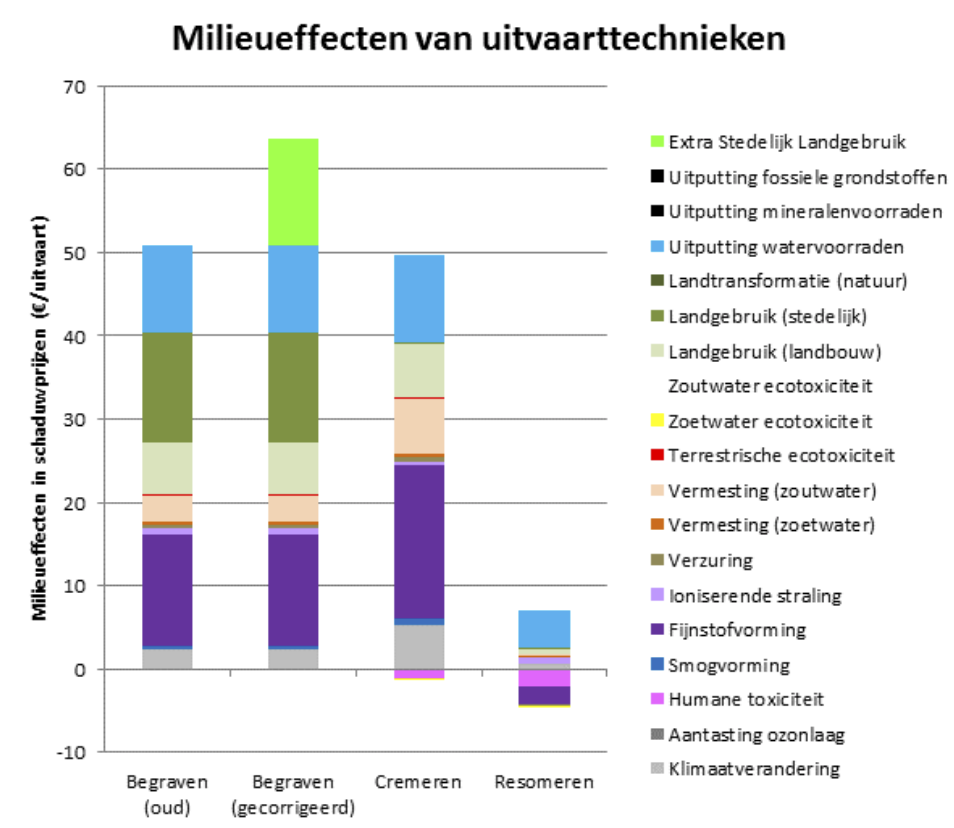
In the Dutch health council's report, multiple reasons are pointed out as to why resomation has less environmental impact than cremation:
- The process makes less use of finite raw materials
- The process has fewer harmful emissions
- Resomation takes up less space
Added to that, there are a few other advantages to resomation:
- Jewelery and golden fillings remain intact, and can be kept
- Prostheses and pacemakers remain intact and can be reused
- Coffins cannot enter the resomator. This means that coffins can be reused, or less impactful materials can be used as a cover
- Unlike a cremation oven, the resomator does not require any filter systems. This means that the existing crematoriums already have the capacity to place the machines.
Criticism of Resomation
There has been criticism from various quarters regarding the TNO research because the representation of burial is based on traditional burial practices. It assumes the use of a headstone and a solid wooden casket. This means that burials using a shroud and a simple board for the body are not considered, let alone natural burials without a headstone. Therefore, burial can be much more sustainable than indicated in the research. Does this change the significance of the introduction of resomation?
As argued above, not only the sustainability of burial itself plays a role but also the future possibilities. For example, natural burials often have perpetual grave rights, which means that these burial sites will eventually reach capacity. Considering the rate at which our global population is growing, a transition to cremation seems inevitable, making the emergence of a more sustainable alternative like resomation necessary.
Resomation and Religion
In 2017, the "Public Opinion Research on Resomation" was published, which examined the attitudes of different population groups towards the introduction of resomation. It revealed that Roman Catholics and Buddhists generally have a positive view of resomation. On the other hand, the Reformed Protestants, Calvinists, and Muslims have the least interest in this new method. The most positive group about the new development consists of those who do not adhere to a specific religion.
Resomation in the Netherlands
Despite a recommendation for the legalization of resomation submitted by Minister Ollongren of the Interior in 2020, the process seems to be allowed only in 2024. Why is this process progressing so slowly?
The original advisory letter was based on a recommendation from the Health Council, which had already published a study on the safety of the Resomator™ in 2018. The Health Council had established a special committee with expertise in anthropology, environmental technology, ethics, law, and biological safety for this purpose. The research revealed, among other things, that no negative effects are expected from purifying resomation effluent. In other words, the use of a Resomator™ is considered responsible.
The implementation of the new law on funeral services has been delayed multiple times due to the circumstances surrounding Covid-19 but continues to remain low on the political agenda. This is despite the explicit importance shown during the climate summit in 2021 of reducing CO2 emissions. In January 2022, Archbishop and sustainability advocate Desmond Tutu deliberately set a precedent by choosing to be resomated. In November 2022, the first installations will be set up in England and Ireland, while unfortunately, the Dutch government lags behind. Fortunately, in addition to the efforts of Resomation Ltd itself, a new initiative has been launched by entrepreneurs from the Dutch funeral industry. These are entrepreneurs who have plans for specialized sustainable resomation centers. This initiative is starting to yield results: during the VTU Funeral Trade Fair, VVD member of parliament Mark Strolenberg visited the booth of Resomation Ltd and Wikkelgoed, after which he publicly declared that he will push for an accelerated legislative change.
Update October 2022: On October 10th, it was announced that the bill will be considered in the first half of 2024. Meanwhile, resomation is gaining more attention in Belgium, and it appears that Belgium will legalize resomation earlier than the Netherlands.
Update November 2022: Due to multiple delays in passing the law, but with no objections to resomation, there is a call to maintain a policy of tolerance. This happened years ago with cremation: cremation was tolerated for 40 years before it was legally allowed. There is great enthusiasm for this tolerance policy, both from Dutch funeral directors and academic hospitals. This is not the first time; in the United States, resomation was initially used in hospitals before it expanded to the private sector.
Update September 2023: This month, the very first Funeral Center for Resomationin the Netherlands has opened. 't Vijfde Seizoen, founded by initiator and visionary Erik van Zoest. The renovation of the funeral center is completed, and the location is already available for use. Once resomation is approved, 't Vijfde Seizoen will be ready at a beautiful location in the middle of the Betuwe. Curious? Follow the latest news about 't Vijfde Seizoen.
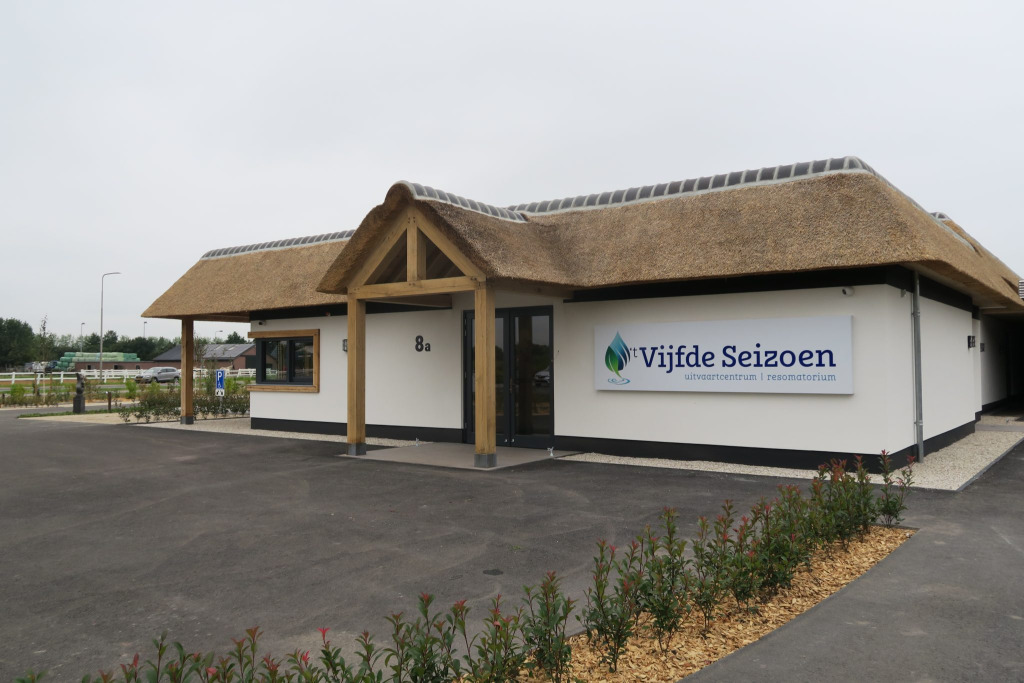
Resomation in Belgium
The debate on resomation in Belgium has yet to begin, according to the director of the Antwerp crematorium. However, he estimates that the legislative process around resomation in Belgium could also proceed quickly, thanks in part to the precedent set by the Netherlands. As the funeral sector legislation in Flanders is likely to be revised within two or three years, he believes that this new technique will also be discussed.
Resomation in other countries
Currently, resomation is already allowed in:
- South Africa
- 32 American states
- Canada
- Mexico
- Australia
Additionally, Ireland and Norway have chosen to allow resomation within a few months through emergency legislation. Several countries are also starting to amend their local laws and regulations. It is expected to be allowed in these countries in 2024:
- Netherlands
- England
- Belgium
- Australia
- New Zealand
- Sweden
- Denmark
A resomation room in Bradshaw’s Celebration of Life Centre in Minnesota
Costs of a resomation
At this point it is not certain what the price of a resomation in the Netherlands will be. There are parties that expect to offer a budget resomation for around €1450,-. The average costs of resomation in the US are $1.695, which converts to €1.436,88. The funeral insurance companies expect that the price of a resomation including ceremony will be around €7.000. In all three estimations, the price equals that of a cremation. However, the financial picture is more attractive given the reusability of a coffin or carrier.
Does resomation fall within my insurance coverage?
Since resomation is not yet widely practiced, it is not possible to say with 100% certainty how it will be covered by insurance policies. Initially, it will likely be possible to receive a payout from the insurance and choose resomation as an option. It is also expected that cremation policies can be converted to resomation policies, and eventually, insurance coverage specifically for resomation will be available. Insurance companies will likely adapt to the developments surrounding resomation.
The necessary accessories
Alkaline hydrolysis only processes animal materials. This means that clothes made from plants, such as cotton and linen, cannot enter the machine. Currently, Wikkelgoed is developing special products that are suitable for a resomation.
Frequently Asked Questions
Will there be ashes left after resomation?
Yes, after the process, dried bones remain, which are then pulverized into a white powder. The volume of remains is about 40% more than with cremation.
Do you have to be resomated without clothing?
There are many misconceptions, but in practice, the body is almost always covered. This can be done using a special resomation shroud or a specific type of body bag.
Is acid used in the resomation process?
No, the process uses potassium hydroxide, which is an alkaline substance.
Does water boil during resomation?
Even though the process occurs at a temperature of 150 degrees Celsius, the water does not boil because it takes place under high pressure.
Can a casket be used in resomation?
Since plant-based protein does not dissolve in the machine, a casket cannot be used for the input. However, a casket could be used during the ceremony, although the body would need to be carefully removed from it.
Is resomation already legal in the Netherlands?
On October 10th, 2022, it was announced that the bill will be considered in the first half of 2024.
Can you wear your own clothing during resomation?
Personal clothing cannot be worn inside the resomator, which means that at the time of input, the deceased cannot be dressed in their own clothing. However, special resomation undergarments can be used, and personal clothing can be placed over them during the ceremony.
Is resomation vegan?
The process of alkaline hydrolysis does not use animal products. However, many shrouds may be made of wool, which is not vegan. Fortunately, the resomation body bag made of bioplastic is a good vegan alternative.
How long does resomation take?
The resomation process itself takes about 3 hours, after which the bones are dried and pulverized.
Can you resomate a pet?
Absolutely! In fact, resomation for pets is already possible. One well-known location offering this option in the Netherlands is the Venlo Pet Funeral Center.

